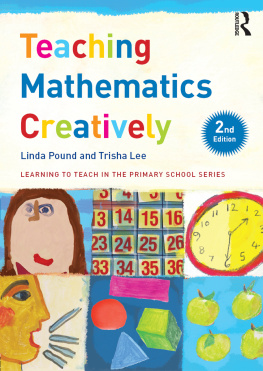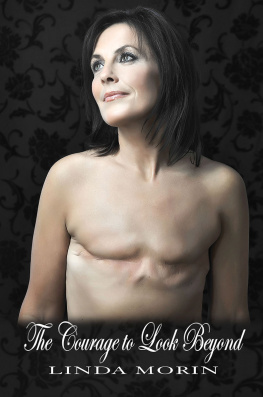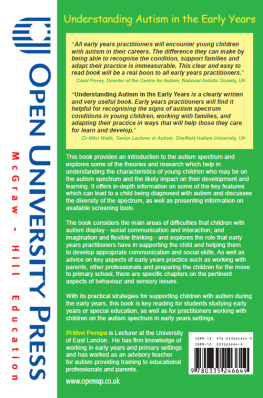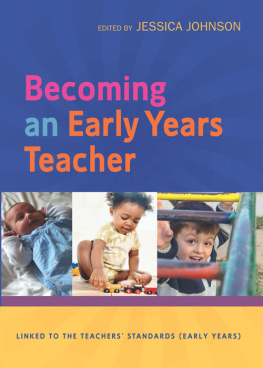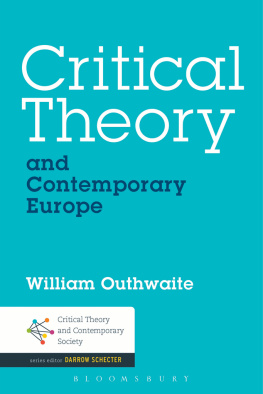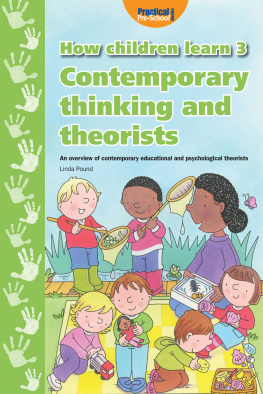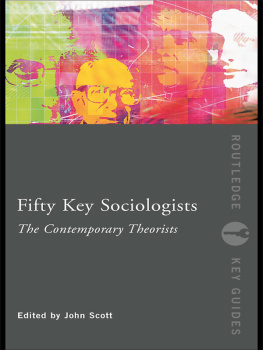Title page
How children learn 3
Contemporary thinking and theorists
by Linda Pound
Copyright page
Published by Practical Pre-School Books, A Division of MA Education Ltd, St Judes Church, Dulwich Road, London, SE24 0PB
Tel: 020 7738 5454
www.practicalpreschoolbooks.com
MA Education Ltd 2009
2012 digital version by Andrews UK Limited
www.andrewsuk.com
Cover images from top to bottom MARY EVANS PICTURE LIBRARY (Johann Heinrich Pestalozzi; Friedrich Wilhelm August Froebel; Rudolph Steiner; Dr Maria Montessori)
Illustrations by Cathy Hughes
All rights reserved. No part of this publication may be reproduced, stored in a retrieval system, or transmitted by any means, electronic, mechanical, photocopied or otherwise, without the prior permission of the publisher.
Introduction
As we saw in both How Children Learn and How Children Learn 2 , theories can be rooted in research and experimentation or they can be philosophical and hypothetical. Whatever their basis, the importance of observation is a common strand in the work of many theorists who were interested in finding out how children learn. All the theories, ideas and movements explored in this book were developed by theorists and thinkers who observed how people, including children, learn.
The focus of the first of these books was generally on individual theorists - such as Jean Piaget or Susan Isaacs. In addition, there were some sections devoted to influential educational approaches such as High/Scope and Waldorf Steiner education. A further category involved sections which explored important aspects of early education such as learning through play or emotional intelligence.
The second book focused on trends and developments rather than individual theorists. It considered the way in which ancient theories have impacted on current thinking as well as exploring the influence of a wide range of progressive twentieth century ideas. This book mostly looked at the way in which theories about literacy, talking, intelligence and creativity have grown out of other peoples theories, and then gone on to develop new thinking on a subject.
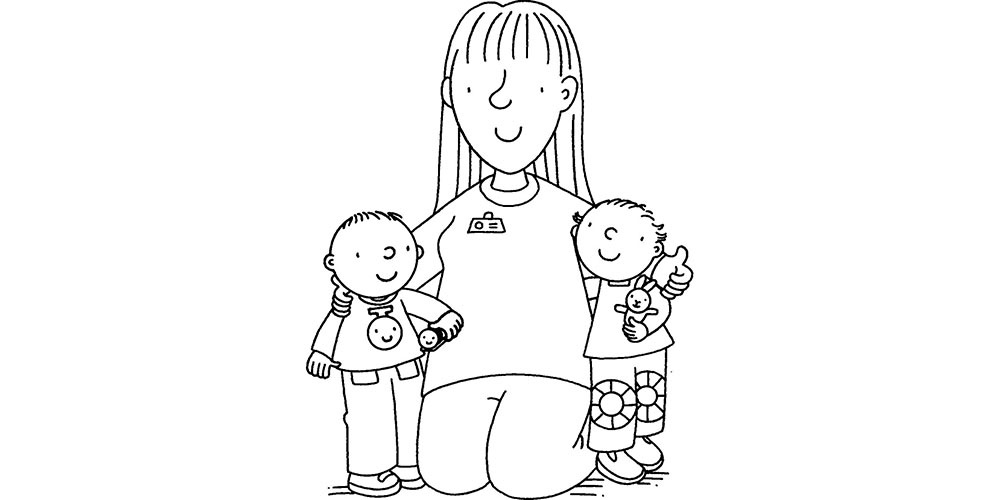
This book considers the contribution made by contemporary theorists and writers to current theories and understandings about how children learn and develop. It seeks to encourage reflection about the ideas each of us holds and the impact this has on the way we support learning and development.
About this book
- This book, the third in the series, focuses on thinkers and theorists who are currently influencing ideas about the learning and development of young children. These people will be listed alphabetically. In the second part of the book a range of related topics will be explored and these will also be listed alphabetically. These include a number of topics which are of particular interest to todays practitioners.
- The sections will follow a common pattern - with some key facts to place the theory or theorist in a context. The theory is explained and the titles of some of their main publications listed. Theory will be linked to practice with examples where relevant and a comments box in each section is designed to encourage you to analyse critically what you have read.
- There are a great many connections between different theories and these links will be highlighted - encouraging you to go beyond the page you are reading. I hope the book will make you want to delve deeper, becoming more reflective and finding out more about childrens learning.
- In writing about contemporary theorists I am conscious of the inevitable distortions and omissions which inevitable occur when attempting to synthesize large and complex bodies of work. I apologise in advance for any such errors and hope that they will be understood and forgiven. I also apologise to those that were left out.

Note to students:
Every effort has been made to ensure that you have all the information you will need to cite sources in your essays and projects. You will need to rearrange these references in your written work in order to meet the demands of tutors and accreditation bodies. Before you hand in your assignments, double check that you have met the requirements of your particular course or place of study.
There is guidance in each section to help you track down further information for yourself. The information in this book is by no means the end of the story. There is much more to be read, discussed and learnt from the work of the remarkable figures introduced in these pages. Check to see whether your library (either your local public library or your college or university library) can help you to track down some of the texts referred to.
Two words of warning:
Be very careful about accurate referencing. Your written work should include a clear reference to all sources that you have used in your written work, whether you have quoted directly from someone else or just referred to their ideas. Carelessness or inaccuracy could lead to you being accused of plagiarism - a very serious matter.
Secondly, use websites with caution. Some offer excellent information, others offer misleading, incomplete or sometimes simply wrong information. Always think about who published the information and when - it may be that the information is just out of date. Think too about why the person published the information. Is it someone who would like to sell you something, or would they have another motive that might prevent them telling the whole truth?
Any website addresses provided in this book were valid at the time of going to press.
Lesley Abbott
PROFILE
Lesley Abbott has a lifetime involvement in research and writing about young children. She was responsible for developing Birth to Three Matters.
LINKS
Reggio Emilia
Belsky
Provision for children up to three
Her life
Lesley Abbott directed the national Birth to Three Matters Project (DfES 2002) and the follow-up Birth to Three Training Matters Project (Esme Fairbairn Foundation). She has held visiting professorships at universities in Australia, Singapore and Ireland. She was a member of a committee of enquiry into educational provision for three and four year olds. This committee, chaired by Angela Rumbold, produced a report in 1990 entitled Starting with Quality .
Her contributions to policy, training and practice in the field of early childhood education were recognised by the award of the Order of the British Empire in 2005. She is currently Research Professor at Manchester Metropolitan University, where she has spent much of her career.
Her writing
Lesley has become best known for her work in developing Birth to Three Matters (DfES 2002). The aim of the pack was to provide support, information and guidance for practitioners with responsibility for the care and education of babies and children from birth to three years. It provided information on child development, effective practice, examples of activities which promote play and learning, guidance on planning and resourcing, and ways to meet diverse needs.
As well as directing the creation of the framework itself, Lesley has written a number of books arising from Birth to Three Matters , including Playing to Learn: Developing High Quality Experiences for Babies and Toddlers , published in 2007. The year before that two books (written in conjunction with Anne Langston) were published, namely Parents Matter: Supporting the Birth to Three Matters Framework and Birth to Three Matters: Supporting the Framework of Effective Practice .
Next page

